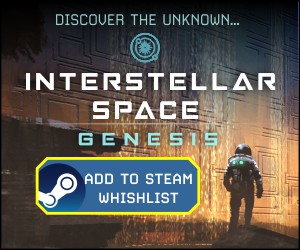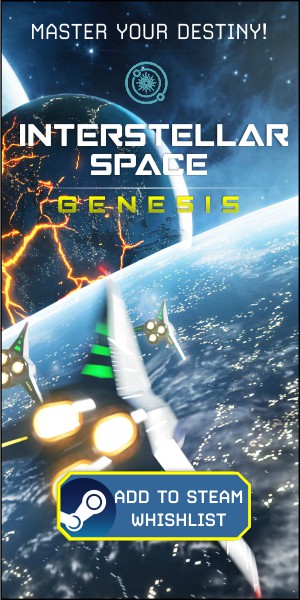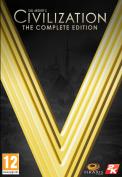Hi to everybody, I’m bertipa and after having spammed all the crevices of Space Sector I managed even to place an article here.
After years of lurking in game-specific sites and forums finding this site has been a huge call-to-arms for me. Here, instead of criticize other works, it is possible to dream, discuss and sometimes even plan the future of 4X Space Strategy Games, a much more positive approach that has moved me, finally, from lurking to posting.
While a sometimes avid 4X gamer my roots are more in SciFi literature and pen and paper role-playing games that I am collecting for a number of years bigger than I care to share. Project management, software and data analysis knowledge come from my more obscure side: my daily job as a Database Administrator.
While I really love 4X games I always felt that something was missing in the experience and here on Space Sector I’m actively searching what was that.
In this first article I will put under the lens the starships combat system, I hope you will enjoy the view.
About starships, combat and conundrums
In 4X turn-based or real-time grand strategy space games conflicts resolution can be done in various systems ranging from the economical to the diplomatic but, more often than not, it will be decided in the cold space with starships that will use every technological advantages they have in store to erase the competition from the skies.
While this can be a quite gloomy view of our future it is also exciting and very appropriate for a game genre that proposes eXtermination as one of his four salient points.
How much importance and depth this system should have in relation to the rest of the game? Well the rule of the thumb says that as eXtermination is just one on four goals of a 4X game and there are other way to accomplish that like the even more bloodier planetary invasion (or bombardment) system or the more civil economic buyout system linked to the diplomatic one then it should not take more than one eight of the time.
Well, that happens rarely. It seems that our players really like the sound of the exploding ships in the void (pun intended) or, at the least, the game designers think so.
It is the very same game designers that, when they will work on space combat, will be confronted with some difficult choices:
The 2D vs. 3D conundrum
The problem here lies in the sad fact that a two dimensional map is barely sufficient for the simulation of nautical engagement and space battle are a completely different beasts. Even most SciFi movies who tried to visualize a modern 3D combat had to revert to something at the most similar to in-atmosphere dogfights than what can really happen in space. At the core of the problem is that nobody really know what can really happen in space because for now we managed to keep this kind of activity here at home.
So let’s let fall any realism problem and let’s define the main characteristics that a space combat should have.
While not realistic it should feel credible: the player is staking the future of his civilization on it and a too cartoonish resolution will not cut it.
It should be comprehensible: even accepting a learning curve the player should not need to have a couple of degrees and a jet fighter patent to understand it.
It should be elastic enough to let strategies and technology developments play a visible part in the outcome.
If it is possible to cram all of this in a 2D environment probably this will be the best choice and has been in most of the previous designs. If it is possible to do that in a 3D one that will be a serious breakthrough in the 4X game scene.
The 1,255 Km/h vs 1,080,000,000 Km/h conundrum
This is also known as the 760 mph vs. 671,000,000 mph conundrum. This is an exaggeration: no combat will ever take place at the full speed of light but even 0.5 c is an enormous and more possible speed, especially for an incoming fleet from the deep space.
The problem here lies with the fact that for our day to day experience the Mach speed is already enormous and, unless you are one of the few people who lose time on 4X games and that at the same time had the luck to flight on the Concorde, practically impossible to really experiment.
Even jet fighter pilots are nowadays depending a lot on their computers. That kind of speed is really over the human reactions capability.
In space speeds are much higher, very much higher.
From Wikipedia: time (1.255 sec.) for a light signal to go from Earth to the Moon showed in correct proportion.
![[Image: 800px-Speed_of_light_from_Earth_to_Moon.gif]](http://upload.wikimedia.org/wikipedia/commons/thumb/6/60/Speed_of_light_from_Earth_to_Moon.gif/800px-Speed_of_light_from_Earth_to_Moon.gif)
This can be safely ignored when you move, let’s say, from one planet to another in a planetary system: extremely high speed is tempered by enormous distances and well defined game time.
It can be much more a chore in space combat: at that kind of speed the fleets of the opposite factions will have fractions of second when they can exchange punishment one to the other.
As you can see I’m carefully avoiding the pesky problem of the relativistic effects that kicks in at a certain speed point. I’m sure that it would be considered overkill for a game.
It is difficult to extract the needed drama from battles that are resolved in fractions of a second.
What we are usually seeing are sluggish battles between practically immobile behemoths with a spat of, relatively, snoringly slow fighters or other light shipping that zips around them.
At this we have to add weapons who, to simulate the much bigger targeting difficulty of a 3D environment, have an atrocious low hit rate.
What all of this means is that the combat system is at best a metaphor of a real space combat and as any metaphor all that it say or in this case display, should have a meaning over the directly visual one.
Will it be possible move all this in a more sensible and speed appropriate direction? Possibly but in any case all the choices made to simplify and made it more playable should have solid explainable foundations and reasons.
The Videogame vs. Newton conundrum
We have already told that Einstein relativity is possibly overkill (at the least for the moment) for a starships combat system so what about poor old Newton?
The guy had spent a good portion of his life to fight against differential calculus to the point that we are all using Leibniz notation even if Newton invented it first. The result of that David vs. Goliath struggle is that all the gravitation and movement equations are simple and clear.
And then we have 4X space combat systems who completely ignore it. No gravity, no inertia, no giant planet slingshots, no catastrophic failure to move from harm way. Somehow I think that taking away Newton from space combat is a little like taking away Shakespeare from the theatre story: a lot of the drama is gone.
The usual question is: why? Mind well: a good answer with its roots in playability, storyline and advanced speculative technology is fine but at the same time an answer like “because that is what my development environment let me to do” it is just not cutting it.
The TBS vs. RTS conundrum
The starship combat phase can have a completely different system than the one of the game: turn based games often revert to real time for the tactical military systems. So, what will be the right way to do it?
RTS, and I have to stress that the R for real is quite the misnomer here, have on its side the immediateness feeling, the sport watcher feeling: the stakes are made more real and close. I object the R for real just because it is rarely one to one with real time. I would have called it CTS: continuous time system.
TBS is more for the chess players, the strategy perfectionists. Adrenaline is substitute by dopamine and the pleasure here is to devise and execute the perfect plan. In reality there is always a lot of time to devise a plan, unfortunately the poor baby almost never survive the encounter with the enemy and then there no more time to spare.
Against intuition probably TBS system are in this case more realistic than RTS ones. In space the combat will be a series of manoeuvres to get the best possible passage in the combat envelope with long wait interval between each other and a final, violent and flashing quick moment of real combat.
As usual the choice will fall more on what system is conveying more the point that the designer want to make than realism. Sometimes (let’s say often) spectacularity is more important, its results are more poignant and that is all that count.
The ZFSM vs. DWCM conundrum
OK, I just created a couple of acronym on the flight, so sue me. ZFSM stand for ‘Zoomable From the Star Map’ and DWCM stand for ‘Dedicated Window Combat Map’. Both systems have been used in 4X space games with more or less success.
One of the most visible problems of the ZFSM system is the starships to astronomical objects proportion. Even a tiny planet like Earth is massively bigger than any starship will be put in operation during the game.
The reverse problem is the empty space feeling: in a DWCM often the starship are alone in a depressing dark environment with maybe a planet and a couple of satellite.
The consequence is that ZFSM can be more cartoonish, a little like the giant archer that is defending the Civilization city from a giant war chariot. After a while the metaphor become clear but it will always be worth a joke.
The consequence of a DWCM system is that combat seems to happen in a different place, a parallel universe dedicated to kill and destroy (now that I think about it quite a sad place) and a limited, claustrophobic one to boot.
How to compromise between the two? Is it just a problem to be able to invest a lot of time and money to become able to render an enormous space and number of planetary systems needed in a Grand Strategy game at such zoom level that ships become in scale? Or better and simpler answers are out there?
The ship to ship vs. fleet to fleet conundrum
Can the same system bring justice to engagement of such different order of magnitude? If the system is designed to bring justice to the details of single ship to ship engagements that will be prevalent at the start of the game will it scale correctly to the end-game fleets to fleets levels?
I have serious doubts about that.
What will be the choice the designer will make?
A usual one will see something that will sadly solve the one to one in a non-satisfactory way, will shine in the group vs. group to one big fleet vs. one big fleet and will fall again trying to manage more, possibly putting hard-coded limit to escape crashes.
Another solution can be to have more than one system but the development costs will become probably prohibitive.
Moving the not well managed type to engagements to the automatic resolution (see immediately later for more on this) can also be an expedient but…
When the player fleet is composed by just one colony ship armed with just a multifunction laser communicator and on the other side there is a pirate patchwork courier it is quite a pity to leave the quite important resolution (a new colony established or not?) to a couple of flashes and a result message.
When the player Joint Fleets Task Force will finally arrive in the Bad Guys planetary system for the Final Confrontation will he want to follow the momentous struggle in all his nuances?
The automatic resolution conundrum
While the resolution of the first engagements will be probably something that a player want to see and influence closely after a while it will become boring and time consuming. When the player is at the head of a sprawling interstellar empire it is doubtful that he will have the patience to follow and direct every little engagements that are going on. More probably he will follow the bigger and/or more strategic ones and leave the rest to automatic resolution.
Here comes the real problem: will the presence of the driving hand of the player change the outcome radically?
If the answer is yes then the automation system will be seen as broken and ineffectual, the player will try to follow as many combat as he can and a huge amount of time will be dedicated to this activity.
If the answer is no the interaction capability will be seen as weak and pointless. The space combat system will become just a button to press.
There are already experimented middle of the road choices like to strongly link the combat with the character system. The player will not manage directly the fleets but he will manage the admirals who will command them, their inherent bonuses and their combat philosophy.
Fleet postures are another way to let the player pre-interact with the engagements and also the starship design system can be a way to externally influence the final outcome of a battle.
One problem I did not see solved in any of the 4X games that I know is what happens when an automatic resolved engagement has a much unexpected result. Be it good or bad the player will need to know why and in the real world that, except extreme cases, should not be a problem.
Conclusions
I have introduced here a lot of non-answered questions.
I think that every game will have its solutions but my point was that all these questions are on the table when their designer will start his work and I am positive that a personal, being it original or not, answer is needed for each of them.
My personal preference is always toward realism but at a certain point, perhaps ironically, reality strikes and simplifications are needed to have a playable game that can be developed in this decade.
The race is open to find the most evocative, original ‘simplifications’ and to be part of the evolution of the 4X space gaming field.
bertipa is a frequent poster in the Game Design forum here on Space Sector. This is his first foray in real article writing but he is already looking ahead for a Nobel Prize in literature in few years. He is a voracious reader of Science Fiction and has a vast collection of pen and paper role playing games. Being allergic to ever finish any serious work not linked to databases he is now considering a carrier as biographic blurbs writer. Come to read and comment his posts here.

11 Comments
Related Articles:
- Sid Meier’s Starships: First Gameplay Footage
- Sid Meier’s Starships: New Space Strategy Game Announced
- Space Rangers HD: A War Apart in Q4 2012 and New Shots
- Sid Meier’s Starships Review
- Gemini Wars – A New Space RTS Game Being Developed by Camel 101 for PC and Mac







This is a great subject to tackle and the article does touch most of it’s points, but there is one big thing I just didn’t quite get. It’s just that in “The ship to ship vs. fleet to fleet conundrum” you write about the colony ship being attacked, as if you are referring to the next section (The automatic resolution conundrum) and not the current one. Nevertheless I still don’t quite get why a combat system would not scale correctly, can you please specify a game in which this problems occurs?
The realistic and relativistic speed problem is not really a conundrum, if we consider the possibility that interstellar travel might not involve actually accelerating the craft near/to/past C speed, but that depends on the specific games’ lore. Conservation of momentum is something I would love to see on a 4x and I had planned to implement in my game, however the more I go over the problem, the less I think it’s worth the trouble. Specially hard when coding attack behaviors, such as fighter craft rotating in mid pass to face its’ weapons against the larger ships’ hull; such as seen many times on B5.
I also agree that the only problem with an automatic resolution system can be how fair it is. Now regarding the rest sections, I personally would go for DWCM and RTS; although I can do see the appeal of a TBS combat system. Finally I also couldn’t help but notice you really missed some comedy gold there by not mixing up the section names as or with names of episodes from “The big bang theory”, but that would only have been a plus ;)
> …in “The ship to ship vs. fleet to fleet conundrum” you write about the colony ship being attacked, as if you are referring to the next section (The automatic resolution conundrum) and not the current one.
That is because in a system designed for medium to big engagement a ship to ship combat feel almost like an automatic resolution.
While that is fine, well almost mandatory, in later stages of the game where the player really can’t follow all the tiny spats around his interstellar domain at the start of the game, let’s say the first age of the History, it can be a big let down to lose a chance to land a prime quality planet with such a non eventful resolution.
Maybe I did not explained myself too well or maybe you do not see the problem but in 4X games all the moment of ‘real’ drama should be milked for what they are worth to make the player fly on the more repetitive parts.
This was one of them and I feel it is a lost occasion to leave a poignant memory to the player.
About Einstein vs Newton: Nobel winner in economics Paul Krugman once wrote a paper on “The Theory of Interstellar Trade” about the effect of relativity on trading. The basic problem he addressed was that the price depends on the time to ship the goods which depends on the reference frame you’re using. The solution is interesting because there’s only one correct reference frame for pricing so in the end relativity does _not_ affect trading.
Of course it does (or would) affect battles. So it would be interesting to see maybe not a strategy game, just a simulator where ships (and maybe projectiles) moved according to Einstein. Probably not a very playable game, just an experimental one. Do you konw if there’s anything like that?
Board games are lightyears ahead of computer games:
For Einstein I found (but not tried) this:
http://boardgamegeek.com/boardgame/8025/orion-combat-near-the-speed-of-light
For Newton the choice is big but this seems to be inspired to Triplanetary that is unfortunately out of print
http://www.irrationaldesigns.com/TSOD/products.html
I think the answers to your questions really depends on the taste of the developer and the audience the developer is aiming for.
As you’ve mentioned, many of the ways going about these work and each have their pros and cons. For example, while having ship vs ship combat is great for the level of detail and seeing your ship designs – it really doesn’t scale well out of the box. Tools and additional features would have to be implemented to control it.
Great article and it was fun to read, bert.
Tanks, appreciated, your articles are also a good read BTW.
Great article. I dig how you resisted the temptation to theorycraft too deeply, inviting comments.
Personally, I am totally fine with leaving relativistic physics out of my 4x games. Inertial dampener magic is sexy. I’m fine if games leave interplanetary travel out as well, and went with wormholes/stargates. I think the wormhole type system opens up more fun building up static system defenses as well. Other than Eve, I really can’t think of a game that has gone that route. Has there been one?
Probably a better word than simplification would be abstraction. I don’t want simplified games, I want a 4x game with better abstractions to enable me to make better decisions without being overloaded by complexity. I do want the complexity to be there when I want to dig deeper though.
Here are a few scattered thoughts of mine bertipa. Discussing all of these topics would take days if not weeks to reach meaningful conclusions. Perhaps the best would be to split each point into a single discussion thread in the forum, or at least several. It’s just an idea.
About starships, combat and conundrums
My take is that highly tactical space combat is not really a must in 4X strategy games (in fact far from it). I do like to be able to give individual orders to my ships if I like however I think there should always be a way to auto-resolve things (for the repetitive, boring, unfun battles). So, for me space combat plays a minor role in my ideal 4X strategy games. Not that I’m not fond of giving orders to my ships and watch all those explosions, react in awe to planetary bombardment (like in Sins for example) and be able to destroy individual ship modules. I mean if you can do all that and still be able to deliver the 95% rest of things left to do to make a great 4X space strategy title then by all means! I’m all for it. However experience tells us that you can’t make many things right.
The 2D vs. 3D conundrum
I like Sins 3D battle system (who doesn’t?), as I like Homeworld’s 3D system also. I don’t fancy Armada 2526’s “3D” battles much however. I also still like MoO1 and MoO2 simple 2D system. So, it’s not really much a matter of 3D vs 2D for me but more if it’s done right. Regarding realism in battles the truth is that nobody really knows, as you’ve putted yourself. I don’t think realism in space combat is for the 4X strategy genre to solve and worry about. I would leave realism in space combat (speed, gravity, other forces, etc) to space combat sim games.
The TBS vs. RTS conundrum
I have fun with both RTS and TBS tactical combat systems in the present as in the past. RTS would be the more intuitive choice for realism as you also said since it would be a contracensus to say that battles happen at very high-speeds and then say that it make sense for an admiral to think things over for several minutes (or hours) before launching a nuke or send the fighters to clear defenses first with 50 enemy destroyers 100 feet away from him. But there are several phases to tactical warfare. In the prelude the admiral has time to think things over, but when fleets meet I don’t think it makes much sense to have minutes to decide which weapon to use or which enemy ship to target. To simplify I would say that TBS makes more sense when a high scale of time is involved, like preparation for battle; moving a fleet, or a single space ship to a certain position that takes a considerable amount of time in realistic terms. This would be when you’re deploying the fleets “in the ground”. Then you should be allowed to move your fleets here and there, however when actual battle starts if you want to go micro-tactical then I would say RTS is the only choice that makes sense to me. In chess the TBS part is well, almost everything :) The RTS part would be the optional 2 sec you take to move your horse with your hand to take the queen :)
The ZFSM vs. DWCM conundrum
My choice would be to go DWCM if you can’t figure out how to do ZFSM properly. Which means with the right proportions. It’s a challenge yes.
The ship to ship vs. fleet to fleet conundrum
Sometimes the simplest approach is the one which provides the more fun. I still like the way the original Master of Orion did the fighting, stacking ships of the same type. You would have a picture with a number. 10 Destroyers, 323 Fighters, 3 cruisers, 1 capital ship. The 10 destroyers fight 5 enemy destroyers but depending on modifiers maybe the 10 can lose to the 5. Beautiful, elegant, simple, easy. Why complicate? What I think you should avoid is to go with ZFSM with individual ships (ironically like DW does). Or you manage to accomplish ZFSM with individual ships in the right scale or you end up with DW swarms of ships (which are not particularly nice to watch nor fun to maneuver. But DW’s space combat is really not the most important part of the game for me anyway (by far), so.
The automatic resolution conundrum
Good point you make here. I would add the obvious, that excellent AI that can replace manual intervention is hard to find (if possible at all). I would say that having an option for automatic resolution of conflicts is a must. The balance would be achieved if the player trusts the AI to resolve minor skirmishes or repetitive battles with more or less expectable results (due to clear odds). When the battles are decisive, and there should NOT be many in my point of view (perhaps 6 dramatic ones and 1 to 2 epic ones), the player should then be called to participate, not because the AI can’t do it, but because the player can, and will always I think, do it better. And to offer the player the most rewarding battles and give the repetitive, skirmishes, boring, clear-odded battles to the AI. Decisive, juicy, epic battles you do yourself. I think this is the ticket and some games already manage to do this reasonably well. DW comes to mind. You setup your fleets with postures defined by you (now you’re taking the admiral role), leave them automated if you want. They auto-resolve minor skirmishes that are boring (but realistic). The AI handles the battles well enough. The big ones, the critical or epic ones you do yourself.
Greetings,
I have been a long time player of the space-flight simulator ORBITER. It’s free share-ware and SUPER realistic!!! Everything is to real world scale, and you have the WHOLE solarsystem to play in with ALL planetary bodies and even surface bases and too much to discuss here…
My suggestion is this… could someone build a combat game with an AI that employs the same features of real phyiscs and real diamentions?
ORBITER proves that simulating the physics and the environment are possible.
I have set up scenarios where 2 or more ships / fighters are trying to dog-fight… the result is several minutes of searching for your opponent followed by seconds of close flyby time.
I’ve learned that a hyper-realistic space battle is much much more about strategy, and the ability to detect an enemy from great distances and then to target them with some kind of ‘torpedo’ or ‘drone’ or long range lazers too. BUT the Wrath of Kahn lumbering dog-fight is pretty unrealistic.
Never the less, adding target tracking on a view screen with ‘magnification’ would help create cool visuals.
I don’t know how the AI could/would handle such distances and the physics calculations could be too hard, causing the AI to crash ships too often??? I have no idea how hard it would be to get an AI to use both strategy and avoid suicidal manuvers…
Thoughts anyone?
I would love a full no-FTL 4X game spanning all the solar system be it normal SciFi, Cyberpunk or even burroughsian/steampunk.
Then a space combat like you describe would be the cherry on the top of the cake.